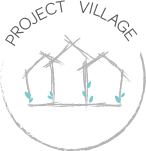There’s a mountain of research suggesting that loneliness is bad for our health. That should come as no surprise to anyone who’s ever felt, deeply in their core, the profound effects of isolation.
With the recent pandemic, it’s not hard to believe that we’re all feeling the damaging effects of loneliness. But, what can we actually do about it?
The first step to battling loneliness is, as you can probably guess, building friendships. Human connection is the key to breaking through feelings of isolation, and it does as much for you as it does for the person with whom you’re connecting. In an age of social distancing, it might seem harder than ever to make this work—but it’s certainly not impossible. With some simple strategies in your back pocket, you’ll find it much easier to cultivate connection when you need it most.
Before we begin, it’s also important to consider who to connect with. Start by making a list of two or three people with whom you’ve connected in the past, and with whom you may have drifted apart. Examples can include people you went to school with or worked with, or even childhood friends. These are great people to reconnect with, as there’s already a history of shared interests and experiences, and it might feel less scary than building a new friendship from scratch. If you do want to connect with someone new, try identifying people who share your interests, as it may be easier to take the next step toward a personal relationship with them.
No matter who you decide to connect with, the crazy and stressful time we are living through may make this the perfect time to reach out.
Be the One to Reach Out
For a lot of us, this will be the hardest step. To be the one reaching out is to make yourself vulnerable, to put yourself out there in the hopes that a friend or acquaintance will reach back. Have a little courage, though, and don’t be afraid to initiate contact. The worst they can do is say no!
Remember to offer up suggestions on the time and place to meet, as well. Nowadays, this is probably going to be via Zoom, but it doesn’t have to be. Consider a socially distanced meetup at a park, or a chat at an outdoor cafe while the kids are in school, for example.
Listen
Put your active listening skills to good use. True communication is a dance, and it requires you to occasionally be quiet and listen deeply to what the other person is saying. Make sure that they feel heard, and that you are focusing without judgment.
This is where it can help to pay attention to your non-verbal cues. Put the phone away if you’re with them in person, or minimize irrelevant windows if you’re connecting virtually. Sit up straight and be truly present in the conversation.
Ask Deep Questions
The goal here is to foster authentic connection, which means both of you should be striving to get to know each other better. This doesn’t mean you should come out of the gate expecting to dig into the other person’s innermost secrets—but you should come prepared to ask appropriate questions to move you both toward a deeper connection. What can you learn about their worldview, personality, or understanding of their circumstances? What can you share about your own?
Most of all, let yourself be vulnerable. Be empathetic. And don’t forget to be kind.
At the end of the day, connecting with each other is what will help us make it through this challenging time. Cultivating meaningful connections and building friendships is what lets us recharge our batteries, and it can even shield us from our own negative emotions. In other words, this practice isn’t just valuable right now—it’s vital.
As you work on making more connections, don’t hesitate to check out our other posts for more insights you need to get through these next months, and beyond.

